Applications and Implications
&
Project Development
Objectives for Week 17
- Answer a questionnaire regarding the final project
What will it do?
The first thought I had while proposing a possible final project during week 1 was to create a game. It doesn't practically solve any social issues, its just for the pure entertainment. The first idea I had was to create an automated Snake and Ladder game but it later changed to a more practical and controllable project.
I came up with a game FLiP inspired by Shut the Box. Mostly all the rules are same as original game but I made some modifications and down-sized it a bit. The game consist of 6 two-faced tiles numbered from 1 to 6. The game is played by 2 players at a time. The tiles has two different colours on the sides. The players choose their colour and the aim is to make all the tiles face the colour of their choice. It is done by rolling the dice. The numbers can be the exact rolled number or combination of numbers that gives a sum equal to the rolled number. If no combination is available then that chance will be skipped.
The whole process of flipping the tile is automated, where, the dice auto detect the top face of the rolled dice, shows the different available combinations possible on a button press and flips the corresponding tiles.
Who's done what beforehand?
Smart Dice is a final project by Jonathan Bobrow from How to Make (Almost) Anything. He has made a dice that reports its orientation and value when rolled. I took the same concept but changed the components I'll be using to make the process easier. I'm using XIAO nRF52840 Sense for the orientation detection where I can also utilize its bluetooth connectivity as well as the Type-C out to charge the battery.
Shut the Box Web App Game
This is an online Shut the Box game developed by Mark Ledbetter using HTML, CSS, JavaScript and jQuery. My work will be a physical game set.
What will you design?
I'll be designing almost everything for the game starting from the circuit designs for the PCBs, mechanism, programming to finally the whole form of the game set.
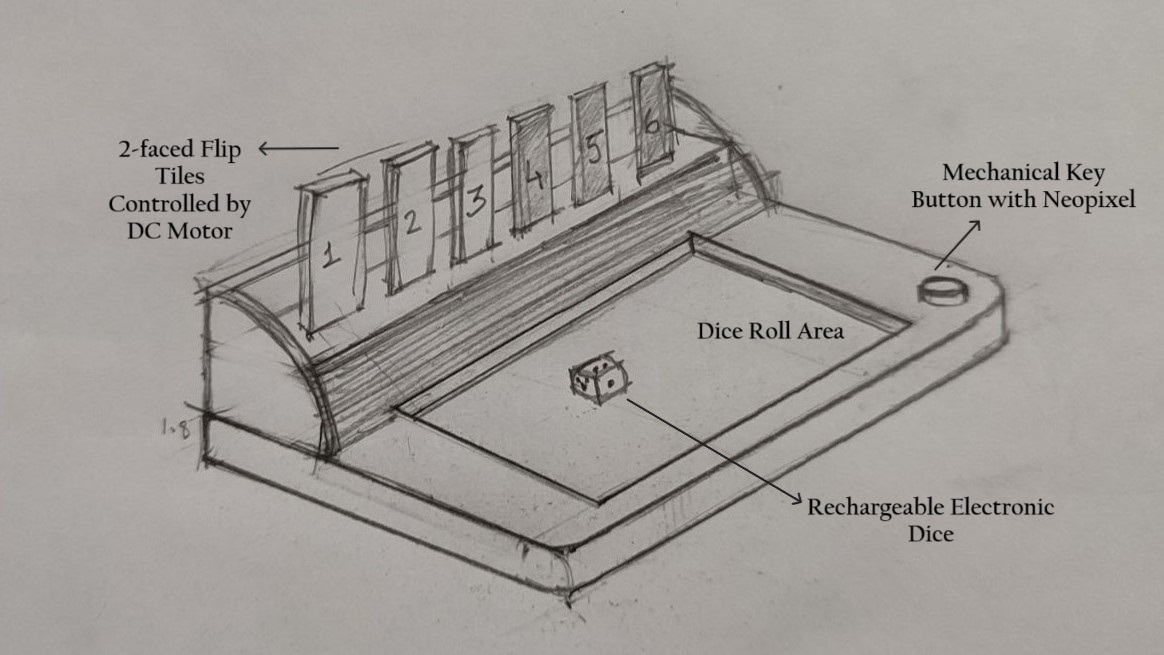
Initial Sketch for the Final Project
Flip Mechanism
DC motor will be used to rotate the tiles 180° both ways. A notch is provided to act as a stpper for the tiles. The tiles will be made of two different coloured acrylic sheets glued together and engraved with corresponding numbers.
Dice
I have inspired from a dice design I saw on Pinterest. It is totally different from the traditional dots seen on the dice. The internal part will hold a rechargable battery, XIAO nRF52840 Sense and a sliding switch for ON and OFF.
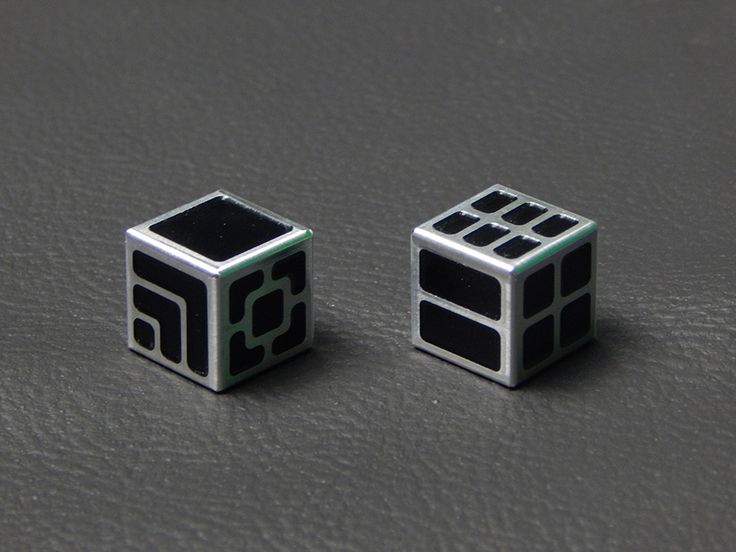
What materials and components will be used, its cost and source?
• Material List

• Electrical and Electronics Components
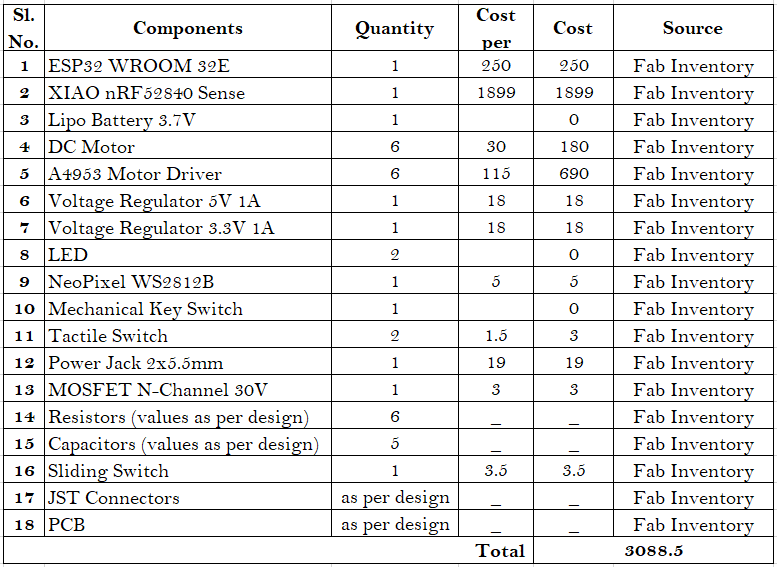
What processes will be used?
- Laser Cutting: Cutting all the 6 tiles (Black and White 3mm thickness acrylic sheets), front panel (White 6mm thickness acrylic sheet), side panels (White 6mm thickness acrylic sheet) and back panel (Black 6mm thickness acrylic sheet) using Trotec Speedy 400 flexx.
- Wood CNC Milling: Milling plywood for the enclosure using Zund.
- PCB Milling and Soldering: Generate the PCBs required for the project using Roland Modela MDX20
- Designing: 3D designing of the final project using Autodesk Fusion.
- 3D Printing: 3D printing the holders, base using Prusa i3 MK3 and dice using Bambu Labs.
- Vinyl Cutting: Vinyl cutting black stickers for Dice using Roland GX-24 Camm-1 Servo.
What questions need to be answered?
How will it be evaluated?
- Flip mechanism functions properly.
- The tiles flip corresponding to the rolled number.
- Proper detection of number on the dice.
Project Development

What tasks have been completed, and what tasks remain and when it will be completed?
Electronics:
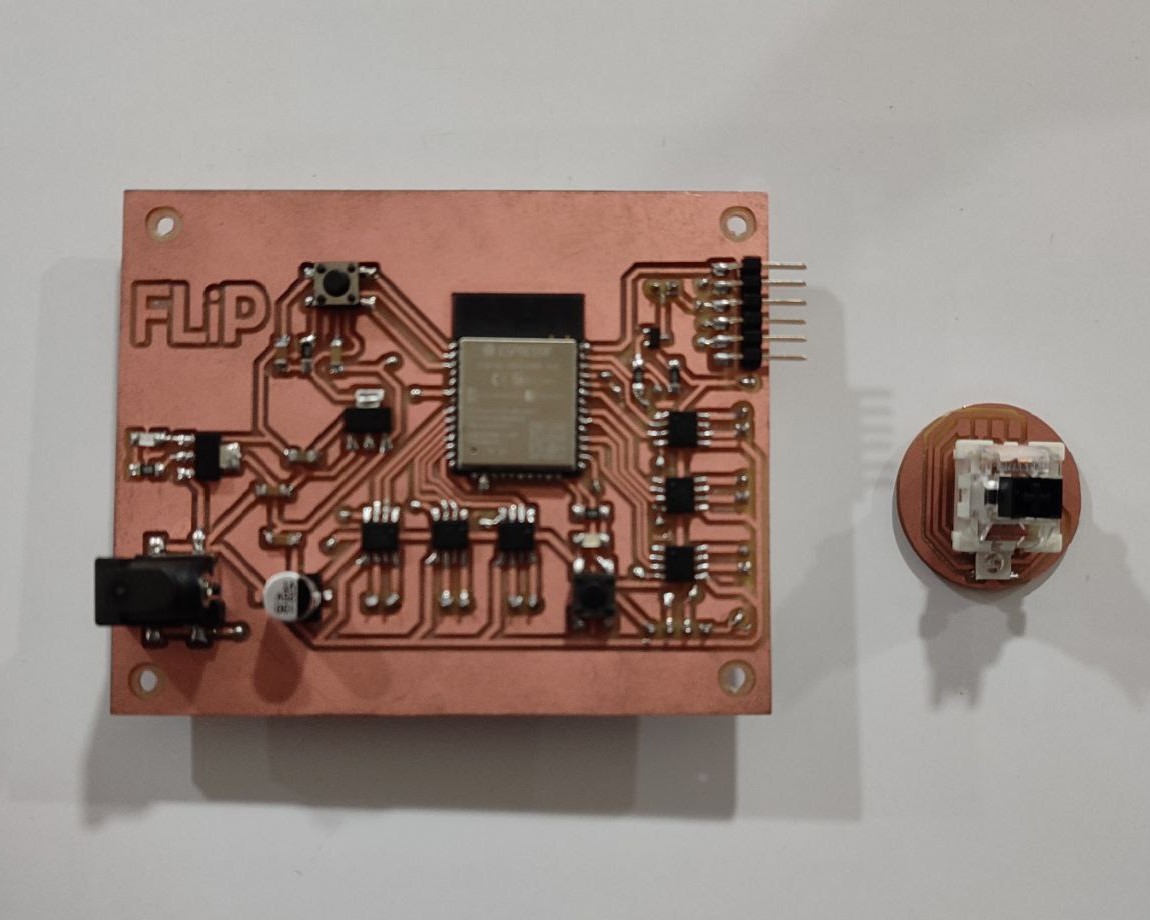
Programming:
Design:
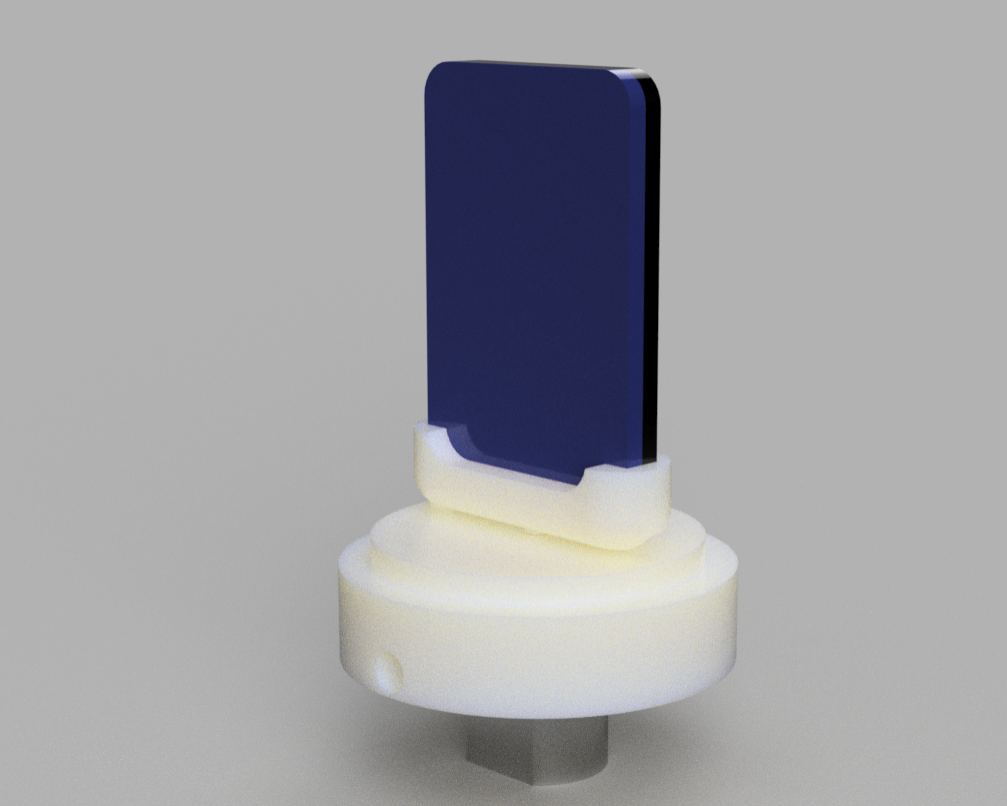
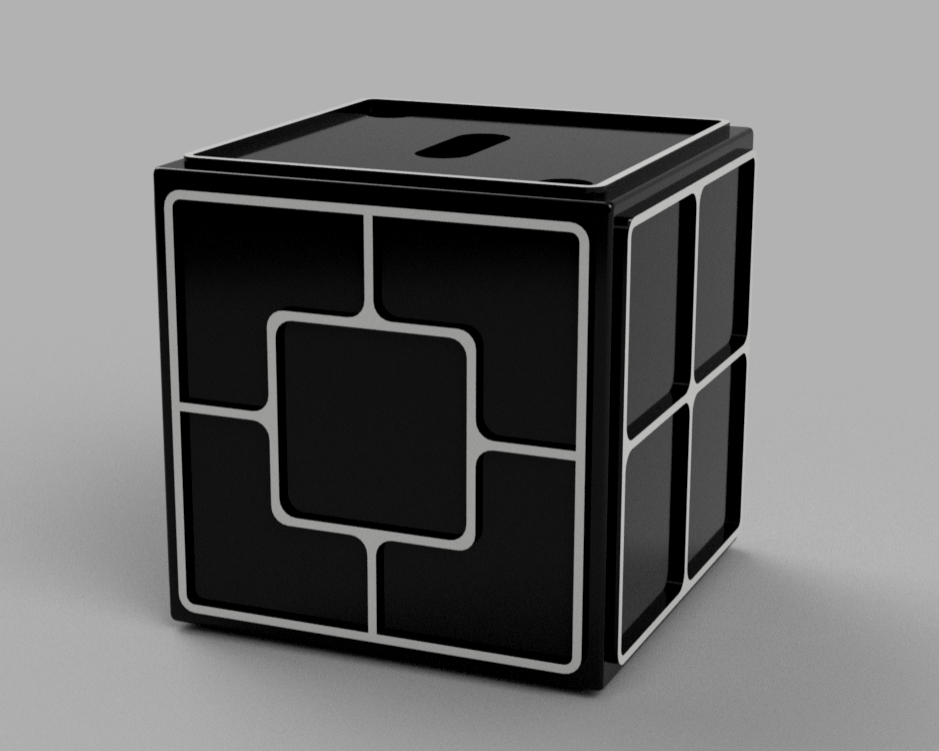
Manufacturing:

What's working? What's not?
As per the current status everything is working fine.